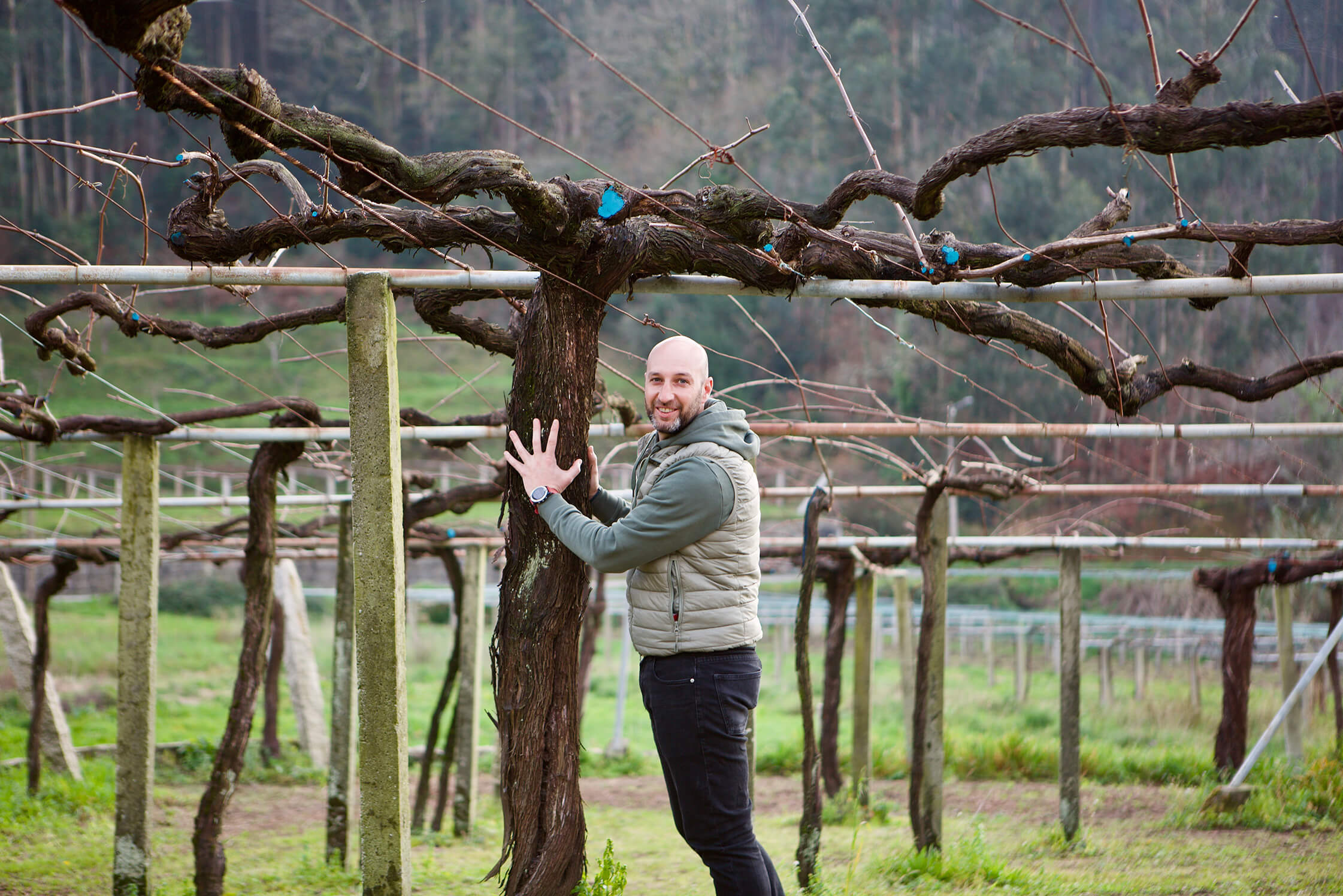2022 Pedro Mendez Viño Branco Albariño
Pedro Méndez doesn’t yet have the world’s attention, but he’s well represented in Spain’s top restaurants, including dozens of Michelin-starred spots throughout the country, including País Vasco’s three-star Arzak. His micro-production of ancient-vine Albariño is a treat to say the least and we’ll take what we can get.
Sustainable farming practices and less than 300 cases produced annually
- Tasting Notes sweet Meyer lemon, sweetened juicy lime, honeysuckle, agave, salty ocean breeze
- Variety Albariño
- Region Spain, Rias Baixas
- Volume 750ml
- Alcohol Volume 12.5%
- Table Talk This wine is made from pre-phylloxera Albariño vines that are nearly 200 years old. They look more like trees than vines (see below).

Pedro Méndez doesn’t yet have the world’s attention, but he’s well represented in Spain’s top culinary destinations, including dozens of Michelin-starred spots throughout the country, including País Vasco’s three-star Arzak, an institution that landed its first star in 1974.
Pedro’s breakthrough into Spain’s top spots started with his reds—50-70-year-old Mencía and Caíño Tinto vines, with the former a peculiar variety for the appellation, especially with its enviable vine age. With just over 1000 bottles produced of each of the two reds, more than half of them are sold to Spanish Michelin-starred restaurants, and most of the rest to top local restaurants. This says something, no? We’re lucky to import a quarter of Pedro’s production of reds along with a quarter of his micro-production, ancient-vine Albariños. It’s not much wine, but we’ll take them.
Related Items
-
2022 Storm Presqu’ile Vineyard Pinot Noir
$58.00This Pinot Noir is shaped by brisk Pacific winds, ancient marine soils, and one of the longest growing seasons in California. It’s cool-climate Pinot at its best and is meant to be enjoyed with a slight chill, just as the sun is setting and the grill is going—cedar-plank salmon, charred leeks, broccolini, wild mushrooms, and a farro salad.
Organic farming practices, native yeast fermentation, neutral oak aging, family-owned, less than 500 cases produced.
-
2022 Domaine Trotereau ‘Château de Quincy’ Sauvignon Blanc
$32.00This wine was sourced from vineyards that come with a unique terroir of sandy, silex, and pink limestone soils… unlike any other Sauvignon Blanc appellation in the world. The combination produces a wine that is beautifully ripe, round, textured, lush, and full of complex aromas. These wines are capable of aging quite gracefully!
Lutte Raisonneé farming, indigenous yeast fermentation, raised in stainless steel & enamel tanks, wine does not underage malolactic conversion.
-
2024 La Bernarde ‘Les Hauts Du Luc’ Cotes de Provence Rosé
$25.00Les Hauts du Luc is a quintessential Provençal rosé crafted in the heart of the Coteaux Varois en Provence. Crisp, dry, and refreshingly elegant, it delivers the kind of effortless sophistication that makes it your go-to all summer long.
Certified organic farming practices, direct press, fermented and aged in stainless steel to preserve freshness.
-
2024 Weingut Bründlmayer Kamptal Zweigelt Rosé
$28.00Austrian rosé is quickly becoming one of the most talked-about categories in wine, and Bründlmayer is a name you need to know. Willi Bründlmayer is widely regarded as a pioneer in Austrian winemaking, and this Zweigelt Rosé is a standout in the lineup. The bottle is a true masterclass in cool-climate rosé.
Certified organic by LACON, hand-harvested, native yeast fermentation, solar-powered and gravity-fed winery.






